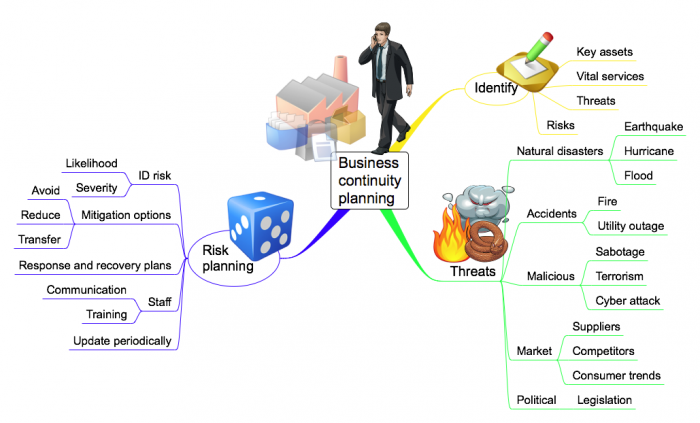As the New Year emerges, we are optimistic about the future but at the same time painfully aware of the realities of our world today:
- the threat of cyber war,
- the fear of terrorist attacks,
- the absolute dependency on information technology, on electrical power, on automated systems, on massive volumes of stored data and information,
- the honesty and integrity of our partners and associates,
- the trustworthiness of our banks, our suppliers, our employees…!
One of the most important assets that a healthy business needs to invest in is its Business Continuity planning and arrangements.
Business Continuity is the Plan B of our business: it is its contingency. It is the set of plans, activities and arrangements made in order to ensure that in the event of a foreseen or even an unforeseen disastrous event, the critical business functions will continue to operate or will be recovered swiftly, so that our business and that of our customers is not destroyed.
All businesses are in need of Business Continuity planning.
Depending on the type of the organisation, it may be more or less vital. For example, business continuity planning is
- unnegotiable in a hospital, in order to at least treat emergency patients;
- crucial to an airport, in order to at least land planes safely;
- vital to an electronic communications provider not only for his own survival but also for the business continuity of many of its customers.
It may not be life-threatening but is still very important in a bank, an accounting firm, a law firm or a travel agency, in order to enable professionals to serve customers. Even in operations where preservation and use of existing data is less important, the inability to continue – or swiftly resume – operations leads to at least loss of revenue.
As part of an organisation’s Risk Management, Business Continuity planning includes:
- building and maintaining resilience;
- enabling recovery; and
- falling back to a contingency.
Enabling recovery is the establishment of mechanisms that allow swift restoration of all or some of the business processes, in the event of failure. In this case, failure is recognized as an inevitable fact and steps are planned to regain operability of what has failed.
As a last resort, if the resilience and recovery measures fail, the organisation should be able to function non-the-less; it should plan for contingency. Alternative procedures, secondary locations, backup personnel and diverse means of communication, are some of the measures that can possibly be utilized.

Various standards and guidelines exist for the support of Business Continuity, such as International Standard ISO 22301:2012, the Guidelines of the Business Continuity Institute, NFPA 1600 in North America, HB 292-2006 in Australia. Guidelines assist organizations in their planning and implementation whereas standards offer the additional benefit of third party attestation as to the compliance with their provisions.
Most important of all, business continuity is a common-sense approach that results from the attempt to answer to a series of “what if…” questions that inevitably cross the mind of any business man or woman. No hard and fast rules are necessary, even though published good practices are an excellent starting point. How can we prevent failure? What can we do if this goes wrong? How can we rectify? How can we retrieve? How can we continue to operate?
Business Continuity planning builds confidence, both internally and externally, that the organisation will be able to provide its services, or at least the most important ones, under almost any situation. This creates a positive client perception towards the business but most importantly reduces anxiety and uncertainty about how the organisation will operate under possible unwanted circumstances.
Even if the company never has to revert to its contingency plans, the fact that they exist adds value and power to the organisation and is important knowledge for all stakeholders.
Systematic Business Continuity management is a prerequisite for sustainability! It safeguards the organisation’s fame!
8.1.2015


